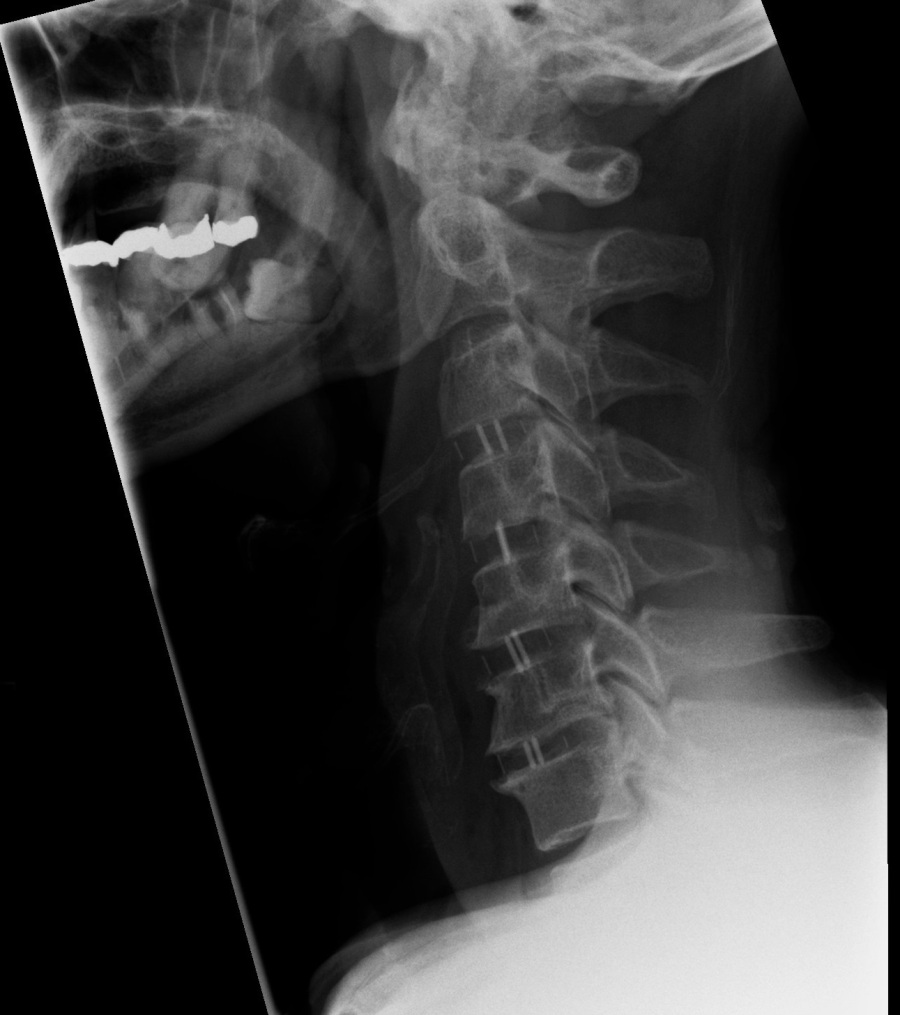
The British Journal of Neurosurgery, which has published a few of my papers in the last decade and which I believe in supporting as it is the journal of my society – The Society of British Neurological Surgeons, just published my recent paper on cervical spine surgery:
This refers to a particular type of surgery commonly done by myself and other neurosurgeons for slipped discs in the neck causing neck or arm pain or limb weakness called anterior cervical discectomy and fusion (ACDF). The surgery involves clearing out the disc space (ideally with a microscope! do please ask your spinal surgeon if they use one) and replacing it with a small cage made from a special plastic, PEEK, or titanium and bone graft or substitute. We showed that not doing X-rays one day after surgery not only reduced the patient’s stay in hospital by up to a day or two, but also reduced radiation to the patient and did not change their management. The tiny proportion of patients who had problems after surgery would have MRI scans ultimately. We estimated saving that department (neurosurgery at Oxford University Hospitals) close to half a million pounds a year with this service improvement audit.
There are minor caveats to this practice. One needs to use X-rays during surgery to check that the correct level has been operated on and it’s good to do another X-ray 2-3 months later to confirm that the cage has fused the spinal bodies together. Not X-raying one day after surgery is best restricted to single and two level ACDFs as for multi-level constructs, knowing the shape of the neck and cage positions after surgery is desirable. I performed and published one of the few robust case series of three and four level ACDF surgeries without need for additional plating, together with one of my complex spinal surgery mentors, Mr Tom Cadoux-Hudson, a truly inspiring role model and great neurosurgeon who taught me many dexterous tricks during my Oxford neurosurgical training.
You must be logged in to post a comment.